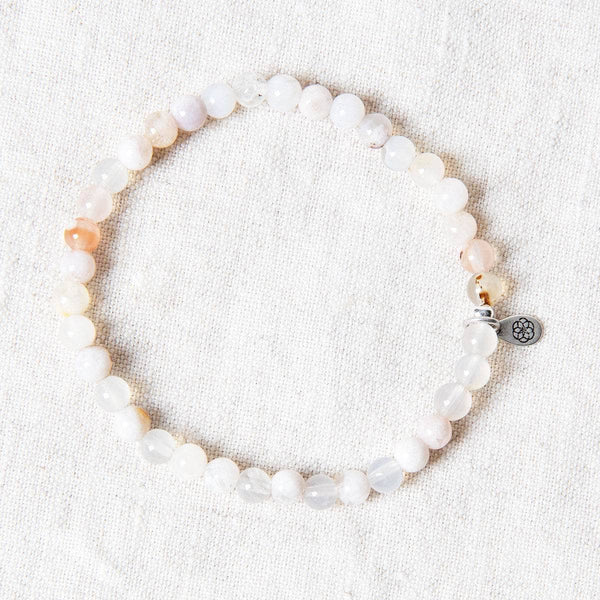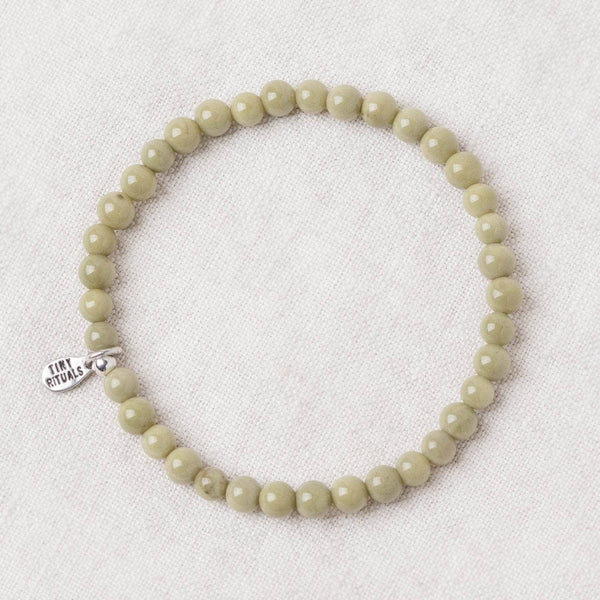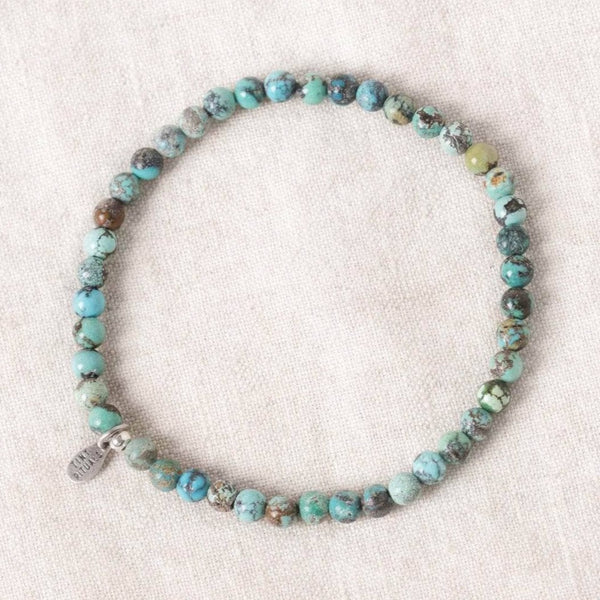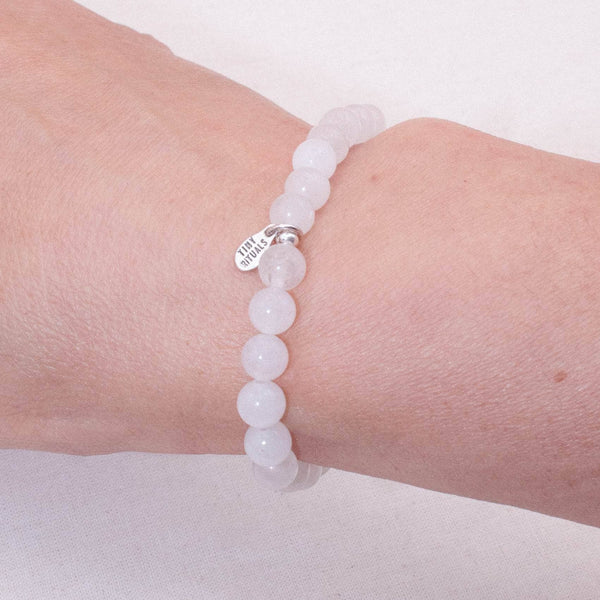IN THIS ARTICLE
Is My Crystal Real or Fake?
Soul sparklers! for anyone looking to turn up the dial on their body, mind, and soul balance, crystals are your direct connection to all things bliss. These gems can pack quite a punch and do everything from bringing peace and serenity, wash out negativity, cleanse, and balance chakras, and generally help you to live a full and extraordinary life.
Take a look at our essential guide to healing gemstones and find a crystal that captures you.
Plucked from Mother Earth, crystals are full of energy and can do amazing things when it comes to deep healing. However, not all crystals out there are born equal and if you truly want to get the most out of these dazzling gems it's essential that you are able to untangle true precious gemstones from the fakes.
Fake gems are out there and knowing how to spot them can make it easier for you to get what you need, desire, and want. While fake crystals can’t cause you harm, you should get the energy and light that you deserve and the beautiful healing that true crystals can bring. As with everything in life, a little knowledge goes a long way. Being informed and better equipped to spot the telltale signs of crystals that are true or those that have been enhanced can make all the difference to getting your collection stacked. Take a look at these handy hints that can help you distinguish a crystal from a dressed up rock…
How to Identify Fake Crystals from the Real Deal

- Fake crystals can be glass
- Fake crystals can be chemically altered
So what even is a fake crystal anyway? Fake crystals can be anything from glass to a gem that has been dyed, chemically altered, glittered up in some way, or any process and method that takes away from the true nature of a stone. It may also refer to homegrown stones rather than those that have been found in the wilds of our wonderful world. Crystals are natural and beautiful and rich in power and they don’t need altering or fashioning up. We know there can be a lot of shame around the world fake and that imposter syndrome runs deep in us all. We don’t want this guide to trigger feelings of spiritual shame or unworthiness, even if you have a few fakeries in your pack, that says nothing about you as a person. We are simply here to map out some tips that may come in handy when it comes to future gem purchases.
1) Strange names
From melon moonstone to strawberry quartz or aqua aura quartz, the kookier the name, the more likely the crystal is to be a fake. While we are all about creative flair and love a little naming fun, these gems that deviate from their true names are more likely to be homegrown or manmade gems rather than those plucked from the earth. These fruit or OTT mystical gems are often made from glass or dyed quartz. To play it safe steer clear of stones with fantastical names. If you want to familiarize yourself with some of the essential gemstone names this will help you to recognize when a title may be off the chart.
2) Saturated colors
While we all love beautiful bright pops of color, this could be a surefire sign that your crystal is dyed crystal. This tends to be a common tip-off when your Citrine is sunshine bright or your Amethyst is positively vibrating with purple, and your Rose Quartz is fuchsia fun. If you want to spot true Citrine from the burnt amethyst that is often passed off as Citrine, you want to look for a light lemon color. That’s not to say that heat-treated crystals are fakes as they do hold energy as modified crystals, that may just be different energy to the one you thought you were getting. True gems are gentler in color and while some will still have a pop, the brightness won’t be blinding. It is worth noting that some gems like Carnelian and Tourmaline do have a strong color game but it's more the quartz crystals and the Fluorite that are softer in their natural shade.
3) Perfectly symmetrical patterns
Rarely are things in nature perfect in their patterns and symmetry so if you are looking at a crystal that is perfect in its shape and even on each side, this may not be one of those gems born from the earth. What makes each crystal unique is that it will be one of a kind. It will have its own chips, flaws, and random shape because like each and every one of us, it too is an individual.

4) Know your retailer
One of the best ways to skip out on fake crystals and precious stones is to do due diligent research when it comes to your retailer. A good retailer relies on their reputation as a true crystal seller and they should be more than happy to back this up. You can check their website or even reach out directly to ask about suppliers and sourcing stones. Knowing the market price of precious gems also helps as you will be able to spot when a deal is too good to be true.
5) Glassy look and feel
Painted or colored glass can be another common technique that is used as a stand-in for the real deal. Knowing how to spot glass from a gem can help you to stay true in the crystal game. This is common when it comes to Clear Quartz crystals as their name suggests, they have a clear and natural glassy look. However, if the stone is perfect and crystal clear without a blot, then it could be glass masquerading as a gem instead. Also remember, that crystals are heavier than glass so if your gem feels a little light to the touch, this could be another clue.
6) Air bubbles
Air bubbles are another telltale sign that you are dealing with glass rather than a gemstone. Remember the marbles you used to shoot as a child, these little round stones also had air bubbles trapped inside. Crystals will contain imperfections but they won’t look like air bubbles. If you are squinting and can’t see clearly you can use a magnifying glass or jewelers loupe to look closer at the stone in question.
7) Moh's hardness scale
The Moh’s hardness scale is an excellent tool for telling if you are dealing with the real deal or full-on fakery. Every tangible thing in this world can fit onto the scale with diamonds being a ten and baby powder being a one. So what about gems? It depends on the gem. Glass sits at around a 5 on the scale whereas quartz tends to come in around a 7. The test is usually that anything higher on the scale can scratch anything lower on the scale, so a quartz gem could scratch glass. Of course, you may not want to perform a scratch test on your polished or tumbled stones but can be a good process with raw stones.
The Main Fake Culprits
So which gems are commonly passed off as fakes? There are some stones that are easier to swap out than others and knowing which gems are more likely to need a closer look can help you to get right down to business when crystal shopping.
Quartz

- No air bubbles
- Check for true imperfections
The quartz family is large and sprawling. From sunny Citrine to Clear Quartz, pretty in pink Rose Quartz, and soft Smoky Quartz, each has its own lush properties and powers to bring to the table. This is one of those gems that can be easy to fake, especially Clear Quartz as it shares glass-like coloring. You can spot true quartz by checking to make sure there are no tiny air bubbles beneath the surface, although misty spots and blemishes are totally natural with real quartz. In fact, one of the best ways of telling if your Rose Quartz or Clear Quartz is the real deal is by the level of imperfections. Quartz won’t be crystal clear or perfect.
Amethyst

- Look for different shades in the same stone
Everyone’s favorite serene gem, Amethyst is super popular but this also means that it can fall under the spell of fakery too. While you may be associate Amethyst with that vibrant purple hue, natural Amethyst is actually more likely to have different shades and hues captured in its coloring rather than a uniform even shade. Authentic Amethyst will also come in at a 7 on the Moh’s Hardness Scale.
Turquoise

- Most turquoise is dyed howlite
- Check the contours of the stone
Real Turquoise is actually super hard to source and most gems out there that are marketed as Turquoise are in fact dyed Howlite. It’s guessed that only ten percent of Turquoise gems are actually Turquoise and the rest will be fake Turquoise or should we say dyed Howlite. That shouldn’t be a deal breaker though as Howlite is brimming with its own heavenly healing properties. Howlite that has been dyed to resemble Turquoise will tend to have one flat color rather than natural Turquoise which will change shade around the contours. If you really want to check, you can also dip a cotton bud in acetone and rub a small area of your Turquoise as sometimes the dye will come off.
Using Healing Crystals Right
Healing crystals are a spiritual experience and you want to know that the gem you are working with is legit or even if it’s a different stone being sold under another name, you want to know which healing properties it will bring so you can work with it under the banner of love and understanding. For example, Turquoise and Howlite have different qualities as do Amethyst and Citrine. Knowing what stone is sitting beside you during meditation, reiki, or chakra can help you to tune in to those vibrations rather than feeling all over the place. If you do have dyed Howlite instead of Turquoise you can also choose to return it to its natural form so you are dealing with the real thing.
Conclusion
It’s important to remember that crystals work on vibrations and connections and you will grow your own relationship with the gem regardless of its name. Healing with crystals is a personal experience and no two journeys look the same. If you love your gem and it turns out not to be what you thought, should you love it any less? Trust your soul and trust your journey.
What is your experience with spotting natural crystals from their counterfeits? Can you tell natural Citrine from the tint of burnt Amethyst? Share with us in the comments so we can all pool our knowledge and buy beautiful high-quality real crystals that bring love and healing to our world.







































































